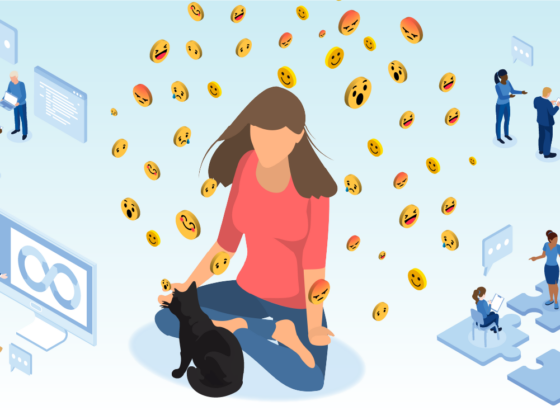by JoAnna Springsteen
Introduction
Part 1: “Why I love a complainer (and you should to)” discussed ingrained social attitudes about complainers and explored some theories and communication models that might explain this common mindset. In Part 2, you’ll learn tangible, concrete strategies for better understanding complainers and embracing them as a valuable part of your team. Because they are.
It’s a unique kind of help that some may need to become more familiar with and it can take some perception shifting to understand fully.
You may consider yourself a complainer. If so, review this list and look for ways to help teach others how to communicate better with you. It’s okay to ask others to meet you where you are and learn together. All parties involved will walk away with a better understanding of one another and maybe a more robust bond–not to mention better ideas for your project.
Here are 5 ways to embrace complainers
- Check your biases at the door
We all have internal biases that we’ve picked up over the years. They can often subconsciously impact us in ways we don’t even realize. When you have a gut reaction to someone speaking and find yourself saying, ‘Oh, not this again,’ check yourself. Ask yourself, where is that reaction coming from? Are you carrying some baggage with you? Set aside all those things and take what you hear at face value.
- Listen without judgment
It’s a social norm to not judge folks, especially in the workplace. If you are “judgy,” refer back to item one. For those of us who find ourselves immediately jumping to conclusions while someone is talking, stop. Just stop. It’s not necessary or kind. What value does it bring to the conversation if you judge someone’s idea before it’s out of their mouth? You are missing an opportunity to learn something new, and it’s on you because you’ve mentally shut them out. (And yes, I might be judging you for being judgy.)
- Don’t assume anything
You’re not a mind reader. Don’t jump to conclusions based on how you would do or say something. Not everyone has the same experiences — and that’s an excellent thing! You wouldn’t want someone to put words into your mouth, so why would you do this to someone else? Seek to understand. Don’t assume; sit back, listen, and open your mind.
- Listen to understand, not to respond
This is also referred to as Active Listening. Be respectful, attentive, and focused on what the person is saying. There’s no need to mentally note how you will respond point by point to what is being said. You’re not listening if you find yourself doing that. Instead, take in what you’re hearing and absorb it. Ask clarifying questions to show you are engaged (without interrupting). Listening is not about sitting there, waiting for your turn to say something. Your goal is to understand that other person’s perspective, even if you may disagree.
- Repeat back what you think you heard
The best way to avoid misunderstandings is to repeat what you think you just heard in your own words. This is also a key component of Active Listening, but it’s worth calling out on its own, as it’s a handy tool in your listening toolkit. You can confirm that what you heard was the intended message. This is the chance to eliminate noise in the communication feedback loop discussed in Part 1: “Why I love a complainer (and you should to)”. If what you heard wasn’t the intent, you can have a conversation to clarify.
We may work in IT, but people are the most critical part of any business. We are not assets or resources to be allocated. We are individuals who work together to create amazing products. To do so, we must have solid communication and feedback practices. We must learn to communicate successfully, knowing that we work with a diverse group of people with equally diverse needs.
Coaching Exercises
Here are a few questions you can use to help reframe your thinking, use during a discussion, or help coach others when they run into these thought patterns.
Examine your behavior.
- How do you react to folks who bring up ideas that might be labeled outside the norm?
- How do you differentiate between someone bringing new information and someone we perceive as a squeaky wheel?
- Examine how your biases prevent you from truly listening to the message instead of focusing on how you feel about the person delivering it
- How do you know when you are reacting instead of listening?
- What are some ways you can practice listening without judgment?
Are you a squeaky wheel?
- How do you feel when your point is not truly understood?
- How do you react when you sense that someone does not understand what you are trying to convey?
- Examine your mindset when you automatically assume people won’t like your idea, but you’re going to say it anyway.
Do you want to be Helped, Heard, or Hugged? - What kind of behaviors discourage you from speaking up?
- How does your team ensure your psychological safety when expressing ideas?
Set aside time to reflect on all these questions and answer them as best you can. What did you learn? I’d love to hear your feedback on LinkedIn!
JoAnna Springsteen is a Scrum Master working to build stronger, healthier teams. She focuses on the people side of software development, using empathy and psychological safety to remind people that empowerment comes from within. JoAnna also really digs collecting meaningful metrics that help teams make data-driven decisions for continuous improvement.




